by Dr Clare Craig FRCPath, Jonathan Engler MBChB LLB and Joel Smalley MBA
When a notifiable disease, such as COVID-19, is recorded the location of the patient involved is also recorded. If notifiable disease data is a reliable measure of symptomatic COVID, then there is a striking South West predominance in the Autumn (Figure 1).
The latest data shows continuing decline in notified cases of COVID-19, with only 50 cases notified to Public Health England in the week ending 20th December and 85 cases in the week ending 27th December. Other datasets including, 111 triage data, 999 triage data, ambulance surveillance data, accident and emergency attendance data and excess death data all indicate a Spring epidemic which ended at the end of May or beginning of June, a regionalised Autumn second ripple, and then a return to baseline. This baseline will be a normal level for winter as COVID is now endemic. The only data that does not fit with the other measures is the data dependent on PCR testing.
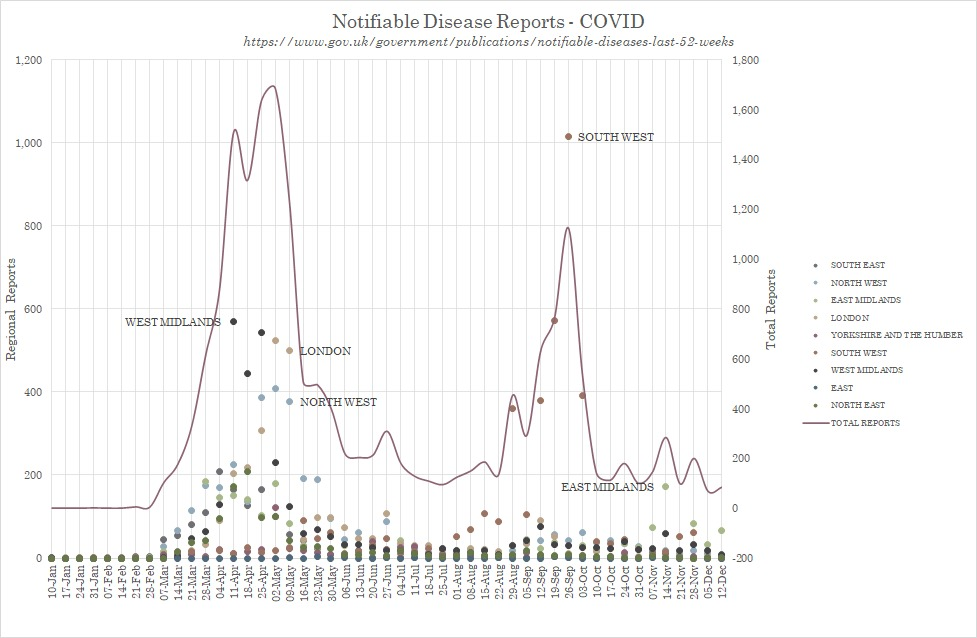
Figure 1. Notified instances of COVID-19 by location.
The numbers of cases that have been notified are a very small percentage of PCR positive results, despite it being a statutory obligation for the treating doctor to notify even a suspicion of a case.
We have previously discussed why notifiable disease reports for COVID-19 may have been lower than expected. In that paper, we included the following graphs (figure 2), the second of which includes a scaled up view of the cases notified so as to more easily observe trends.

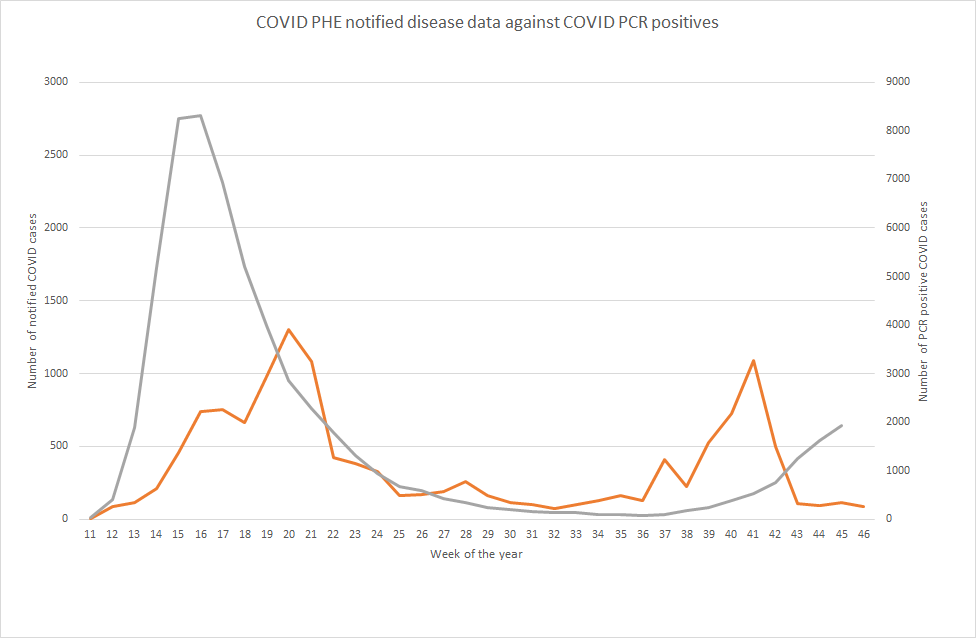
Figure 2. Notified COVID cases (orange) vs PCR positive COVID cases (grey). Top graph on same scale second graph scaled to show trends.
However, closer inspection suggests that the Autumn “2nd peak” of Notifiable Covid may in fact be an artefact which does not represent the true picture nationally, since nearly all the deaths notified during Autumn were in fact from the South West region, with the peak in that area reaching numbers beyond those seen for other regions in Spring.
.
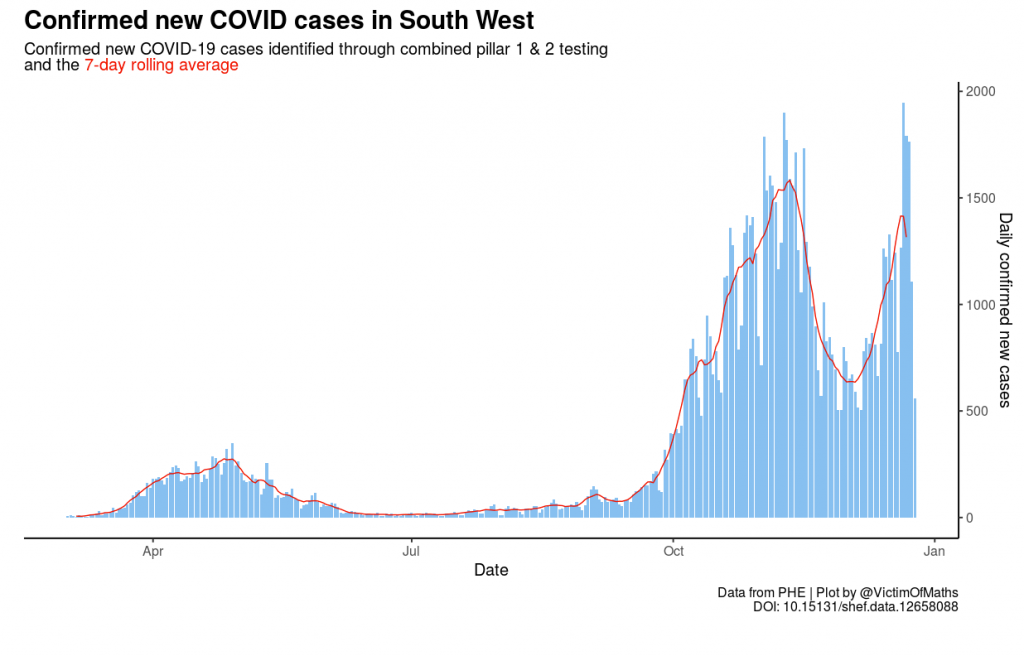
Figure 3. Cases of COVID diagnosed in the whole South West region.
PCR positive cases showed a similar rise and fall in cases in the South West in Autumn (figure 3) to that seen in the notified disease data. However, unlike in Spring, there were minimal excess deaths observed in the Autumn from 16th October (figure 4).
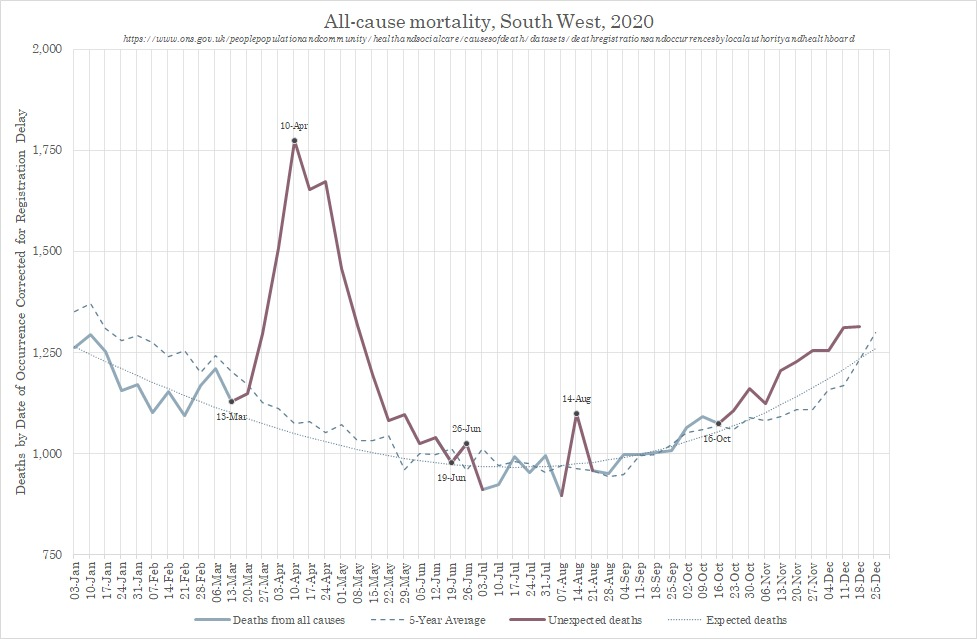
Figure 4. Deaths by date of occurrence 2020 in South West compared to 2015-2019 (dashed line) and projected deaths based on low levels of death in 2020 in January and February (dotted line) demonstrating summer excess deaths in the heatwave and minimal excess deaths in Autumn.
It could therefore be hypothesised that a team of enthusiastic doctors in this region have been more vigilant in reporting outbreaks than elsewhere, but it is noteworthy that the same team were not as vigilant in Spring. If the South West data in Autumn were removed from the dataset then the notifiable disease reporting data takes on a familiar trajectory (figure 5).
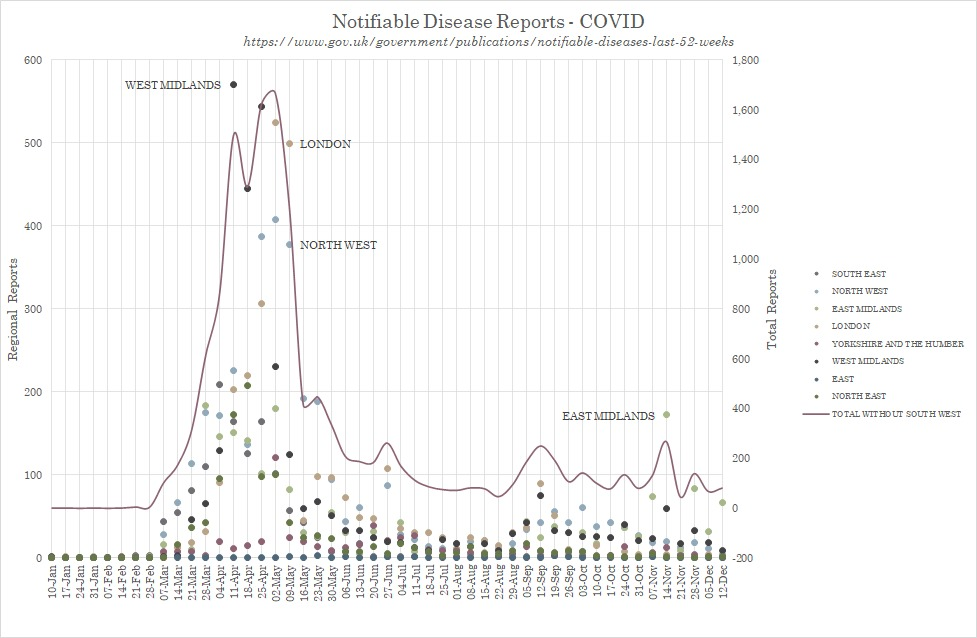
Figure 5. Notified instances of COVID-19 by location excluding South West.
The notified disease data may be subject to marked bias, e.g. from a particular group of doctors being more earnest about their statutory obligations. However, it is odd that the PCR positive case data is not reflected by excess deaths confirming, as seen elsewhere, PCR positivity is no longer measuring real Covid.
Conclusion
The first impression from examining the overall notifiable disease data is that the numbers are far lower than PCR positive results but that there was a similar level of disease present in Autumn as Spring. However, examining this data on a regional basis shows that a group of enthusiastic doctors in the South West may have created a distortion in the Autumn data. Removing this distortion would result in this dataset concurring with multiple other sources to indicate that the epidemic phase of the COVID-19 outbreak was, as previously stated, over in Spring.













Donate
We depend on your donations to keep this site going. Please give what you can.
Donate TodayComment on this Article
You’ll need to set up an account to comment if you don’t already have one. We ask for a minimum donation of £5 if you'd like to make a comment or post in our Forums.
Sign UpLatest News
Next PostA Reply to David McGrogan